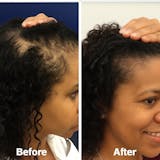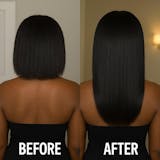The Best Natural Hair Care Tips for Healthy, Thriving Strands
The Best Natural Hair Care Tips for Healthy, Thriving Strands
Natural hair is more than just a style—it’s a crown, a journey, and a form of self-expression. Whether your hair is wavy, curly, or coily, caring for it with natural methods helps preserve strength, shine, and beauty. Over the years, experts and brands like Mielle Organics have emphasized that healthy hair doesn’t come from one single product or miracle ingredient. Instead, it’s the result of consistent habits, mindful choices, and daily routines that honor both your hair and your overall well-being.
Scalp Care: The Foundation of Growth
Healthy hair begins at the root, and that means paying attention to your scalp. A clean, nourished scalp provides the perfect environment for strong growth. Gentle massaging with oils or even your fingertips helps increase blood flow, delivering oxygen and nutrients directly to your hair follicles. Choosing sulfate-free cleansers prevents stripping away natural oils, while rinses like diluted apple cider vinegar can restore balance and eliminate buildup without harsh chemicals. Even something as simple as cleansing with your fingertips instead of your nails makes a difference in protecting scalp health.
Detangling with Care
Detangling is a step that many dread, but when done properly it can transform your hair health. Always detangle on damp, conditioned hair to reduce friction and breakage. Work in sections, starting at the ends and gently moving upward with a wide-tooth comb or your fingers. This patient approach prevents knots from turning into breakage and helps preserve your length over time.

Moisture and Protection
Moisture is the lifeline of natural hair. Experts emphasize that hydration works best when applied in layers—begin with water or a leave-in, follow with oils, and finish with a cream to lock it all in. Humectants like aloe vera and honey draw water into your strands, while natural oils such as castor, jojoba, and argan help seal it in. Don’t forget about your ends; as the oldest part of your hair, they require the most protection. And when it’s time to sleep, switch to silk or satin pillowcases or bonnets to minimize friction, and keep your nighttime styles loose to avoid tension on delicate areas like your edges.
DIY Hair Masks and Natural Products
Sometimes the best treatments are already sitting in your kitchen. DIY masks made with avocado, banana, honey, or aloe vera can provide deep nourishment and hydration. For strength, try a blend of yogurt and egg; for shine, aloe vera gel and flaxseed gel make an excellent combo. Beyond DIY, choosing chemical-free products makes a long-term difference. Look for shampoos that are sulfate-free, conditioners without silicones, and styling creams free of parabens and artificial fragrances. These choices help maintain your hair’s natural balance without the long-term damage often caused by harsh additives.
Nutrition and Inner Health
What you eat and drink has as much impact on your hair as what you apply to it. Hydrating with plenty of water helps keep strands supple, while foods rich in omega-3s, protein, and vitamins like biotin and vitamin E provide the building blocks for strong hair. Leafy greens, nuts, seeds, and fish are particularly beneficial. If your diet falls short, supplements can help fill the gaps, ensuring your body has what it needs to support healthy growth.

Styling, Trimming, and Everyday Habits
Your styling routine is another area where small changes make a big difference. Avoid excessive heat, and if you do use styling tools, apply a protectant and keep the temperature low. Protective styles like twists and braids help minimize daily manipulation, but they should never be too tight—constant tension can weaken your hairline and cause thinning. Regular trims every two to three months keep split ends from traveling up the shaft, leaving your hair looking fuller and healthier.
In addition, many habits recommended by professionals emphasize balance. Conditioning deeply is vital, but leaving it in for hours doesn’t always mean more benefits—stick to the time recommended by the product to avoid over-softening your strands. Wash on a schedule that suits your scalp and lifestyle, usually every one to two weeks, and be consistent with treatments that work for you.
Protecting from the Elements
The environment plays a bigger role in hair health than most people realize. Sun exposure can dry and weaken strands, so covering your hair with a hat or applying UV protection is helpful. Cold weather strips away moisture, making heavier oils and protective styles especially important during winter. And in urban areas, pollution can cling to your hair, so regular cleansing keeps your strands fresh and buildup-free.
Final Thoughts
Healthy, thriving natural hair doesn’t happen overnight—it’s built through daily choices and consistent care. From gentle detangling and scalp massages to DIY masks, nutrient-rich diets, and chemical-free products, each step adds to a foundation of resilience and beauty. Remember: your hair journey is unique. Listen to your strands, treat them with patience, and celebrate progress along the way.🌿 Ready to bring these habits to life? Explore clean, nourishing oils and scalp treatments at SeddyNaturals.com—crafted to help your natural hair thrive.












